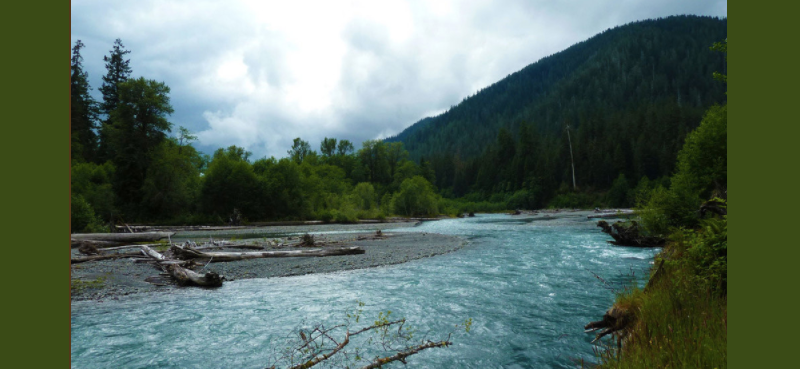||| FROM KOMO NEWS |||
SEATTLE — Increased noise pollution from more powerful Navy military jets is threatening the health of both humans and wildlife in what once was the quietest place in the continental U.S. – the Olympic Peninsula, according to a newly released study by the University of Washington.
The study found that noise from Navy EA-18G electronic warfare jets, known as Growlers, is audible across a large swath of the peninsula, including the Hoh Rain Forest. And the problem soon could get worse, as the Navy is set to implement another 75% increase in flight activities from its base on Whidbey Island.
“I think there is a huge gap between what the Navy is telling people — that its aircraft are not substantially louder and operations haven’t changed — and what people are noticing on the ground,” said lead author Lauren Kuehne, who completed the work as a research scientist at the UW School of Aquatic and Fishery Sciences and is now an independent consultant. “Our project was designed to try and measure noise in the ways that reflect what people are actually experiencing.”
The paper found that aircraft were audible across a large swath of the Olympic Peninsula for an average of one hour during each six-hour period. About 88% of all audible aircraft in the pre-pandemic study were military planes.
Eight American Indian tribes call the peninsula home, while Olympic National Park receives more than 3 million visitors a year and is a UNESCO World Heritage Site. More than two dozen animal species are found only on the peninsula, and multiple species are listed as threatened or endangered under the federal Endangered Species Act.
“The Olympic Peninsula is a renowned hotspot for wildlife, home for people of many different cultures and a playground for outdoor enthusiasts,” said co-author Julian Olden, professor at the UW School of Aquatic and Fishery Sciences.
The researchers chose three primary sites on the Olympic Peninsula to monitor sound during four seasonal periods from June 2017 to May 2018. Two sites, at Third Beach and Hoh Watershed, were near the coast, while the third site was inland on the Hoh River Trail. They placed recorders at each site, then recruited and trained volunteers to help process the nearly 3,000 hours of recorded audio.
“This data is very accessible — you can hear and see it, and it’s not rocket science,” Kuehne said. “I wanted people to feel like they could really own the process of analyzing it.”
From their analysis, the researchers identified nearly 5,800 flight events across all monitoring locations and periods. Of these, 88% were military aircraft, 6% were propeller planes, 5% were commercial airplanes and less than 1% were helicopters.
Three-quarters of all recorded military aircraft noise occurred between 9 a.m. and 5 p.m. on weekdays. Most of the military aircraft were Navy Growlers.
READ FULL ARTICLE: komonews.com/news/local/uw-study-navy-jet-noise-endangers-humans-wildlife-on-olympic-peninsula
**If you are reading theOrcasonian for free, thank your fellow islanders. If you would like to support theOrcasonian CLICK HERE to set your modestly-priced, voluntary subscription. Otherwise, no worries; we’re happy to share with you.**









I have wept encounterring salmon retyurning to swuabble over the right to spray milt on redded eggson the Elwha River The US Navy are blasphemers of the sacred land.
SEVENTY FIVE percent increase!? That will kill everything!
I stand with what Joseph Murphy says. I stand with the Tribes, who have always known how to take care of the lands and waters. Will we stand with them to protect the innocents and their homelands?
The US Navy and Air Force commit war on our own people and lands. There is no “glory” in this. Sound, radio waves, and sonar are weapons that kill, maim and deafen. We are being lied to by a war racket cartel. Follow the money. How many trillions now have “disappeared” from the defense fund? Who’s pocketing all that money?
Why/ how are these proofs of tremendous harm and genocide/ecoocide not enough to stop the madness? How many studies all saying the same thing will it take?
I actually read this Navy justification for bringing the growlers back from Idaho to Western Wa: The real reason is because the boys wanted to be back on Whidbey base ” in time for dinner.” Head- slap!
But wishing the growlers back on Idaho doesn’t solve the problem… the truth is, there is no place or justification for war anywhere on earth. It’s big money and big lies. The people and creatures who are dying from this, can’t fight back. They just want to live. Our salmon and whales and cetaceans want to live. We want to live.
How do we stop this? What will it take?